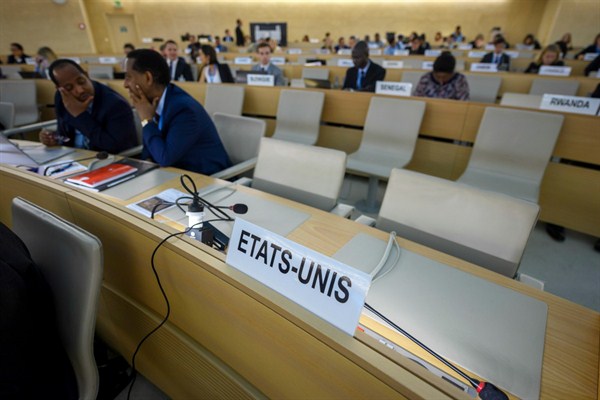For months, the Trump administration has threatened to withdraw from the United Nations Human Rights Council. Finally, on June 19, Secretary of State Mike Pompeo and the U.S. ambassador to the U.N., Nikki Haley, jointly announced that the United States was leaving the body, charging that it was a “protector of human rights abusers, and a cesspool of political bias” against Israel. On one level, it should not come as a surprise that President Donald Trump chose to exit yet another U.N. organization—last year, he ditched UNESCO, the U.N.’s cultural body, over what his administration also called its “anti-Israel bias.”
When faced with the choice of reforming either an international organization or agreement from within, or simply packing up and leaving, Trump has consistently chosen the latter option, whether with the Paris climate change agreement or the Iran nuclear deal. Truth be told, the Human Rights Council has faced its share of criticism, both for its perceived prejudice against Israel, as well as for permitting egregious human rights violators to serve on its board. But like every decision the Trump administration has taken to disengage from the international system, its departure from the Human Rights Council comes at a steep cost.
The Trump administration’s underlying theory of its departure is that the best way to reform the council is to blow it up—to delegitimize it to such an extent that it either ceases to exist or radically transforms. The likelihood that either scenario will unfold is remote. The council will continue to operate, albeit with much less influence from Washington.

